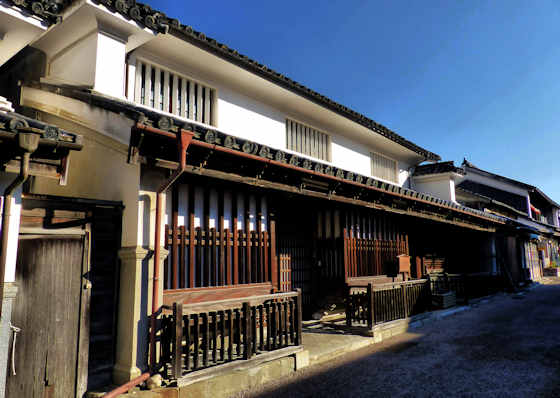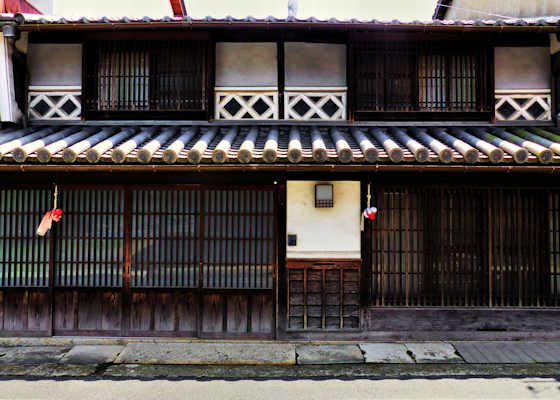Showing posts with label preservation district. Show all posts
Showing posts with label preservation district. Show all posts
Tuesday, June 27, 2023
Wakimachi Historic Preservation District
Labels:
Architecture,
indigo,
mima,
preservation district,
shikoku fudo,
udatsu
Friday, June 16, 2023
Kajimura Residence Tsuyama
The garden is also recognized nationally, and combined with the teahouse makes this traditional property well worth a visit.
Labels:
Architecture,
chugoku33,
garden,
Museum,
preservation district,
teahouse,
tsuyama
Friday, June 9, 2023
Joto Historical District Tsuyama
Mostly machiya, traditional townhouses, with many having namako-kabe, literally "sea cucumber walls". the diagonal dark tiles with raised white grouted joints that reminded people of sea cucumbers, as well as koshiirimado and mushikomado latticed windows.
Theer are, of course, the obligatory sake breweries, as well as shops selling traditional confectionary, including the local specialty kirigasane, and local varieties of tofu, and shops selling tradional craft products using local indigo dye. There are also cafes, restaurants, and teahouses.
Labels:
chugoku33,
preservation district,
tsuyama
Thursday, June 1, 2023
A Brief Guide to Takehara
As with every town in Japan, there are a fair number of shrines, temples, and wayside altars. The biggest and most important shrine, Isonomiya Hachiman, is just outside the historic district. One of the larger temples in the historic district, Saihoji, has a picturesque hall built on a platform. Fumeikaku has great views over the town.
Labels:
akinada,
Museum,
preservation district,
takehara
Sunday, May 28, 2023
A Stroll Though Omori
This final photo is a great example of kote-e, plaster relief, found on the "treasure house" of one of the temples.
Labels:
iwami33,
omori,
preservation district,
world heritage
Subscribe to:
Posts (Atom)

































































